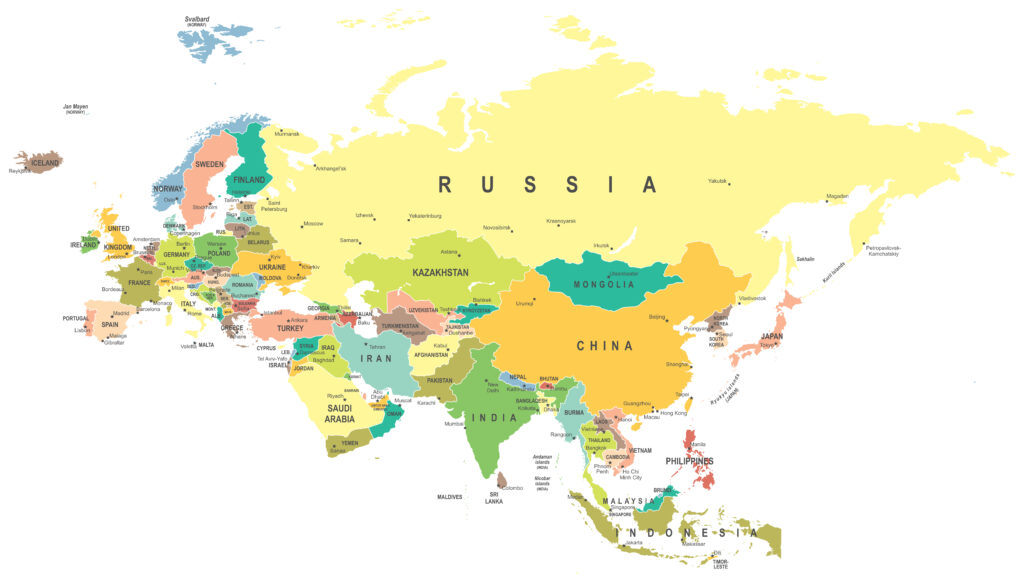
By Ivan Timofeev, RT, 4/5/23
Ivan Timofeev is the Valdai Club Programme Director & one of Russia’s leading foreign policy experts.
Long before relations between Russia and the West spiralled into a comprehensive political crisis, officials and experts here were enthusiastically voicing ideas about developing ties with the rest of the world. At the administrative level, such a course began to take shape as early as the 1990s, starting from the views of former Foreign Minister Evgeny Primakov. Subsequently, it also received practical development within the framework of a multi-vector foreign policy.
The gradual growth of contradictions with the West accelerated the formation of ‘pivot to the East’ ideas, although their implementation was slow. It was limited by objective infrastructural and economic conditions, as well as the absence of a direct and painful incentive for such a ‘turn’. However, the current crisis in relations between Russia and the West, for all its appearances, is irreversible, and has driven an increase in the number and quality of ties with countries which are outside the control of the US. The ‘sanctions tsunami’ and the impasse in relations with the West have become a very sharp stimulus for long overdue changes. At the same time, a number of difficulties and obstacles await us on our way to the ‘world majority’. Moscow must assess them realistically and objectively, and we must avoid the illusion that the pivot itself will solve all our problems. We have hard and painstaking work ahead, for decades to come.
The development of Russia’s relations with the non-Western world is likely to take into account several interrelated tasks. The first is the formation of centres of power which are relatively independent from the United States and its allies, with a high degree of political agency. These do not have to be consolidated into a single political project. There may be some contradictions between them. However, their independence in making fundamental decisions in the areas of security and development is the essential feature that unites them. Russia itself is unlikely to be able to cement and consolidate them alone. However, it exemplifies the very possibility of challenging the political West on fundamental issues. Not everyone is ready to follow the same path, but the very fact of its presence is an event which has a global dimension.
While avoiding imposing ideological conditions, Russia has nevertheless managed to create a significant precedent. That is why the suppression of the ‘Russian rebellion’ is a matter of principle for the West. The victory of Moscow – in any form – will mean the consolidation of the precedent, which means that the fight against the West will become uncompromising. The stakes are extremely high.
The second task is to create reliable opportunities for modernisation through interaction with the non-Western world. Here, success is far from guaranteed. The ‘world majority’ is closely embedded in Western-centric globalisation, although the existing system has its own problems.
One of the most obvious is the West’s growing use of its central position in global networks as a political tool. Politicisation is taking place on a broad front, from global finance and supply chains, to the media and universities. So far, the system is outwardly stable, but the number of dissatisfied voices is growing. If Russia manages to build a workable economic model that is not fundamentally connected to Western financial institutions or supply chains, the precedent will be very serious. Previously, such precedents have been associated with countries that are called ‘rogue states’. Despite the costs for them and their citizens, countries such as North Korea and Iran have managed to maintain their agency and build functional economic models. These are distorted by sanctions and restrictions. However, they still exist and develop. The emergence of such an alternative in a large and well-resourced power will significantly change the current state of affairs. In addition, China, as a major player, is very cautiously following the same path. While maintaining beneficial global ties and not forcing a confrontation with the US, Beijing is gradually building an economic system that is resistant to the external contour. Russia’s course is beneficial there because the Chinese get a partner in building their own economic system, protected from the influence of competitors and rivals. At the same time, Beijing is hardly interested in revolutionary breakthroughs that would make it lose control of the situation.
The third task is to ensure security vis-à-vis the West. The conflict has drastically undermined Russia’s security. On our Western borders, we are dealing with a powerful, technologically advanced and consolidated bloc. Its military strength will grow and it will be positioned to oppose Moscow. The military situation in Ukraine will determine the further dynamics of threats. The prospect of an open military clash between Russia and NATO is becoming quite real. Preventing such a scenario has already become a key military-political priority, in which the military rather than the diplomatic factors play the leading role. The prerequisites for a peaceful solution to the conflict are not yet visible. If we assume a peace agreement or a ceasefire will eventually happen, then the problem of the stability of such a deal will arise. Our disastrous experience with Minsk-2 has shown that it can become a cover for the next phase of the conflict, as some Western European leaders have directly confirmed. The countries of the Euro-Atlantic region will remain a direct military-political threat.
Does this situation mean the severing of all ties with the West and a painless restructuring? No. Russia’s links with its Western neighbours have been accumulating for centuries. Even such a powerful crisis like today’s cannot cut them overnight. Within the West itself, there is both an ideological and a purely material stratification. Behind the facade of general political slogans lies an extremely heterogeneous political and mental space. It bizarrely combines postmodernism and ultra-liberalism with conservatism and traditionalism. Moreover, the latter does not determine the proximity of positions to Russia. For example, Poland is one of the most conservative countries in Europe. However, conservatism in itself does not create the political prerequisites for rapprochement with Russia.
It is impossible to count on the proximity of cultures, values, and mentality as a prerequisite for political rapprochement. On the other hand, the very existence of such connections will continue to provide Russia and various Western countries with similar coordinates and human ties, no matter how distant political relations may be. To remain human even in the face of confrontation, to maintain cultural, humanitarian, and, ultimately, family ties amid hostility, hatred, and political confrontation, is a much more difficult, but nonetheless very important task.
In our relations with the ‘world majority’, there is no similar cultural commonality. However, this does not prevent the establishment of pragmatic relations. Does it mean that the cultural distance will remain significant forever? No. It will be necessary to build up our cultural competencies in working with a wide variety of non-Western countries. The civilisational diversity is amazing here. Russia has unique schools of Sinology, Arabic studies, Indology, and many other areas. Unfortunately, though, these institutional advantages are extremely limited when it comes to meeting the tasks of a full-fledged turn to the East. It is normal for us to speak European languages, we have absorbed European literature, and we more or less understand a person of European culture, with all the diversity of the West. At the same time, we know very little about the literature, culture, and mentalities of countries which remain friendly. For a complete turnaround, we will need dozens of schools like the Institute of Asian and African Countries at Lomonosov Moscow State University, not to mention language teachers. Without such competencies, working in the depths of Chinese, Indian, and many other societies will be extremely difficult, if not impossible.
At the same time, we will have to take into account the fact that the countries of the world majority which are friendly to us have their own national interests. They are unlikely to sacrifice them simply for the sake of friendship with Russia. Every time, we will face a set of requirements and requests that will, ultimately, not be beneficial to Moscow. Many non-Western countries maintain close relations with the West. A considerable number of them still benefit from Western-centric globalisation, even if this gain is inertial in some cases. Moreover, many use a modernising process according to the Western model, preserving their cultural identity, and if possible, political sovereignty, but do not hesitate to use Western standards in the fields of economics, production, management, education, science, technology, etc.
When establishing and maintaining ties with friendly countries, Russia may well find itself in a situation in which certain Western models will again come to Russia through the East, just as the ideas of Aristotle came to medieval Europe through Arab intellectuals. It will be difficult for Russia to make a choice between the West and the non-West, simply because such a choice is impossible in practice. Rather, Russia will have to engage with a variety of cultures and ways of life.
We may have to listen more than we talk and learn more than teach. What lies ahead is a time of patience, endurance, and sometimes humility, in the face of hardship, without which it will be difficult to survive a new historical epoch.

